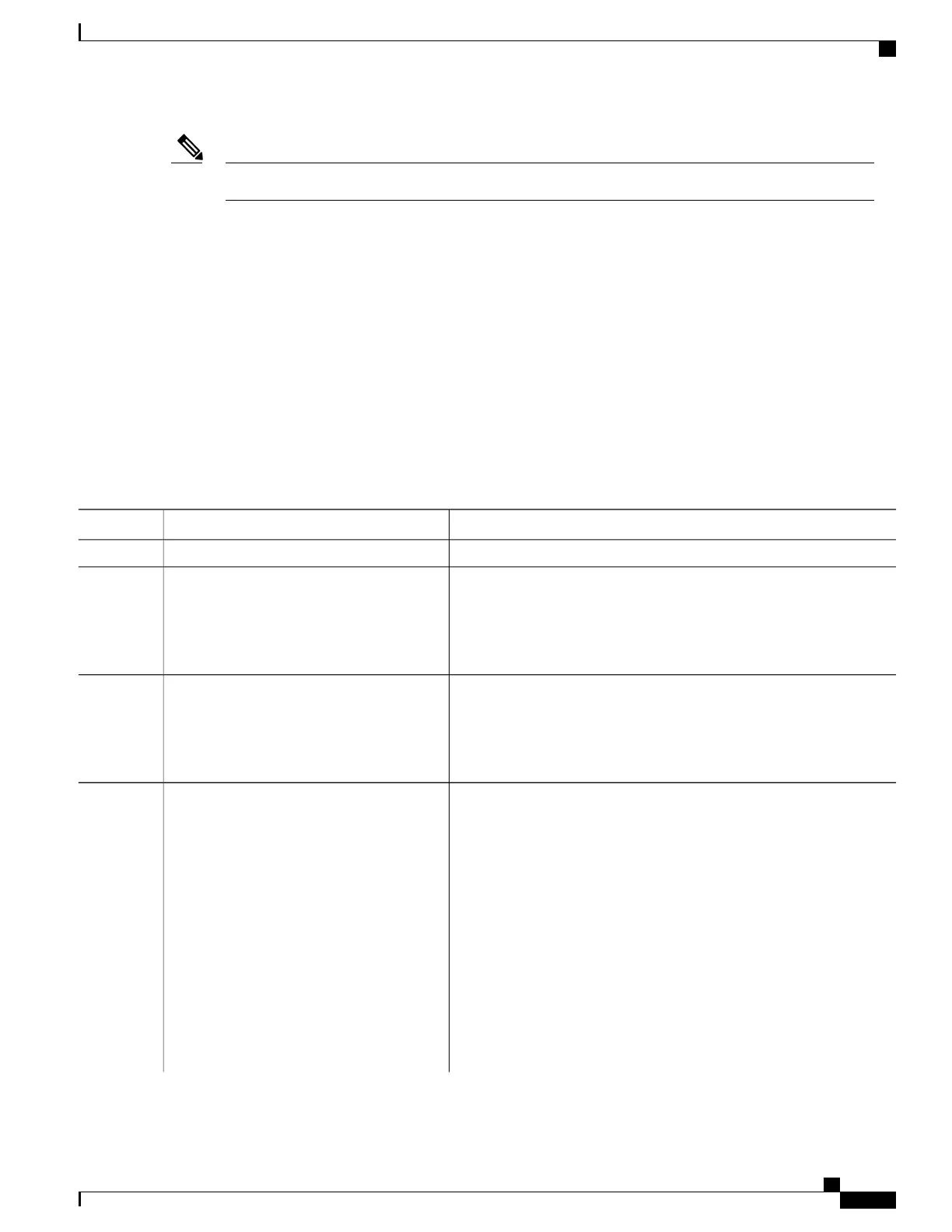Enabling BGP unequal cost recursive load balancing feature is not supported on CPP based cards.Note
SUMMARY STEPS
1.
configure
2.
router bgp as-number
3.
address-family { ipv4 | ipv6 } unicast
4.
maximum-paths { ebgp | ibgp | eibgp } maximum [ unequal-cost ]
5.
exit
6.
neighbor ip-address
7.
dmz-link-bandwidth
8.
commit
DETAILED STEPS
PurposeCommand or Action
configure
Step 1
Specifies the autonomous system number and enters the BGP
configuration mode, allowing you to configure the BGP routing process.
router bgp as-number
Example:
RP/0/RSP0/CPU0:router(config)# router
bgp 120
Step 2
Specifies either an IPv4 or IPv6 address family unicast and enters address
family configuration submode.
address-family { ipv4 | ipv6 } unicast
Example:
RP/0/RSP0/CPU0:router(config-bgp)#
address-family ipv4 unicast
Step 3
To see a list of all the possible keywords and arguments for this
command, use the CLI help (?).
Configures the maximum number of parallel routes that BGP installs in
the routing table.
maximum-paths { ebgp | ibgp | eibgp }
maximum [ unequal-cost ]
Step 4
Example:
RP/0/RSP0/CPU0:router(config-bgp-af)#
maximum-paths ebgp 3
Note
•
Valid values for maximum-paths are 8 for ASR 9000
Ethernet Line Card and 32 for ASR 9000 Enhanced
Ethernet Line Card.
•
The ASR 9000 Ethernet Line Card limits the number of
routes to be installed to 8 in the forwarding hardware even
though the maximum-path value configured is more than
8.
•
ebgp maximum : Consider only eBGP paths for multipath.
•
ibgp maximum [ unequal-cost ]: Consider load balancing between
iBGP learned paths.
Cisco ASR 9000 Series Aggregation Services Router Routing Configuration Guide, Release 5.1.x
OL-30423-03 149
Implementing BGP
Enabling BGP Unequal Cost Recursive Load Balancing

